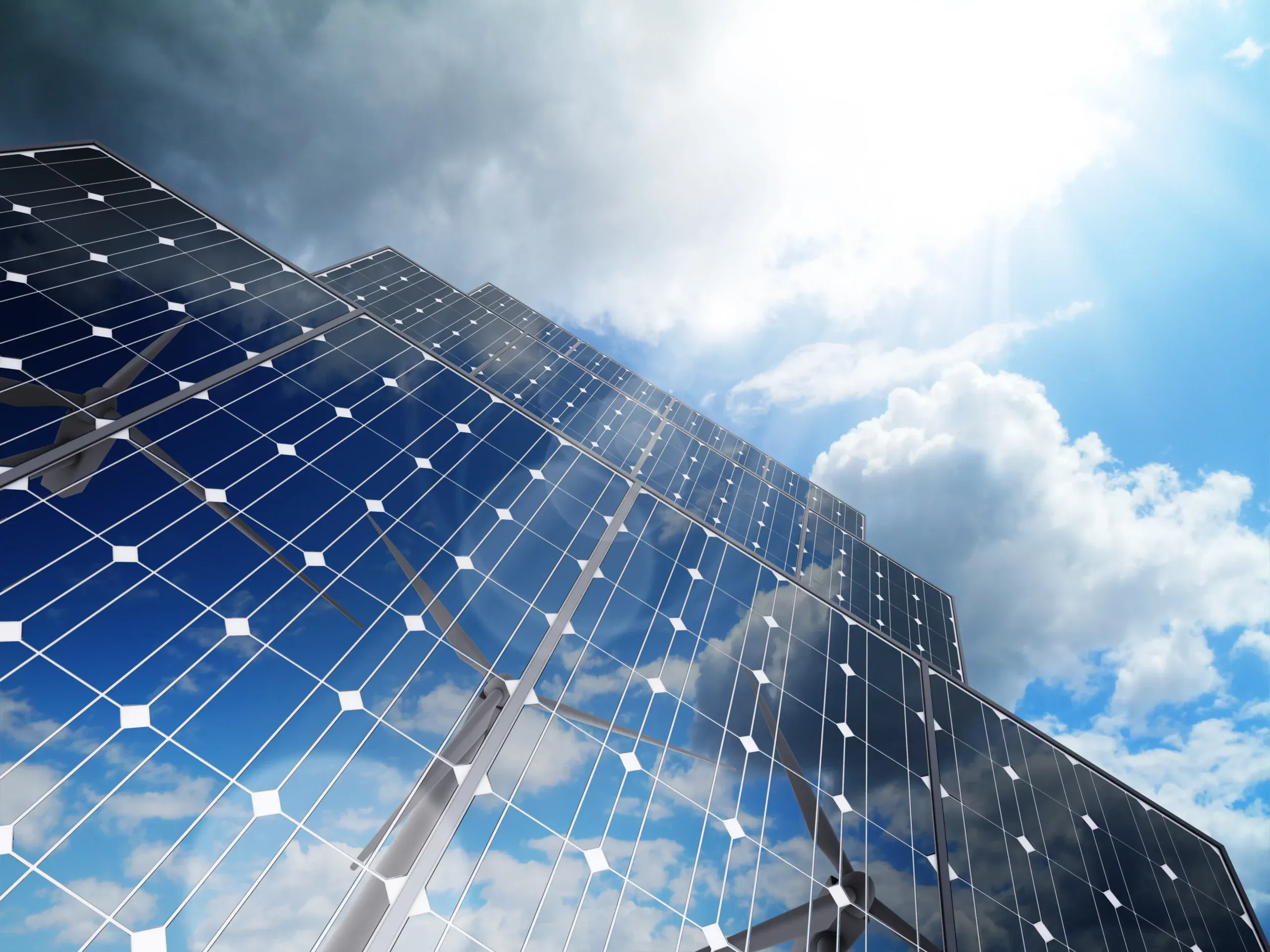
Introduction
As the world grapples with the twin challenges of climate change and energy security, renewable energy has emerged from the fringes to become a central player in global energy markets. This shift is not just about replacing fossil fuels but is also about innovating and evolving the way we generate, distribute, and use energy. Today, we delve into the latest advancements in green technology and explore how these innovations are propelling us towards a more sustainable and resilient energy future.
The current state of renewable energy
Renewable energy, once seen as a niche player in the energy sector, has undergone tremendous growth over the past decade. Innovations in technology and increasing environmental awareness have propelled renewable sources such as solar, wind, and hydro into the mainstream.
Solar power innovations
Solar technology has made significant strides in increasing efficiency and reducing costs. Recent developments in photovoltaic (pv) cell technology have achieved remarkable efficiency rates, making solar power more viable than ever. Innovations such as bifacial solar panels, which capture sunlight from both sides, and floating solar farms are expanding the possibilities of where and how solar technology can be deployed.
Wind energy: bigger and better
Wind energy is witnessing a revolution, particularly in the scale and efficiency of turbines. The newest turbines are now capable of generating power enough to supply thousands of homes per turbine. Offshore wind farms, benefiting from stronger and more consistent winds, are contributing an increasing share of wind-generated electricity.
Hydroelectric power and beyond
While hydroelectric power is a well-established source of renewable energy, new approaches like small-scale hydroelectric projects and kinetic hydro systems, which generate energy from flowing water without the need for large dams, are making hydroelectric power accessible to a broader range of environments and communities.
The role of green technology in modernizing energy grids
The integration of renewable energy sources has necessitated the modernization of energy grids. Smart grids, which use digital technology to monitor and manage the transport of electricity from all sources, play a crucial role in enhancing the efficiency and reliability of energy distribution.
Energy storage solutions
Advances in energy storage technology are crucial in addressing the intermittency of renewable energy. Breakthroughs in battery technology, including solid-state batteries and flow batteries, offer longer life spans, higher efficiency, and greater safety, promising to revolutionize energy storage.
Smart grid technologies
Smart grids are integral to managing the complexities of renewable energy integration. These technologies allow for better demand response management and grid stabilization, ensuring that the fluctuating supply of renewable energy does not affect the reliability of the grid.
Challenges and opportunities in renewable energy adoption
Despite the advances, the path to widespread renewable energy adoption is fraught with challenges. Economic, political, and technological hurdles still need to be overcome to fully harness the potential of green technologies.
Economic and regulatory landscape
The cost of renewable energy technologies has been falling, but economic and regulatory barriers still hinder their full-scale adoption. Policies and incentives play a crucial role in encouraging the adoption of green technologies.
Technological challenges
While technology has advanced, issues like the efficiency of solar panels in cloudy regions and the impact of wind turbines on wildlife pose ongoing challenges. Addressing these issues requires continuous innovation and environmental consideration.
Future trends in renewable energy
Looking forward, the trajectory of renewable energy is set to continue its upward trend, with several promising areas poised for growth.
Innovations in renewable materials
Research into new materials for making solar cells, such as perovskites, promises panels that are not only more efficient but also less expensive to produce than traditional silicon-based panels.
Expansion of geothermal energy
Geothermal energy, which uses the earth’s internal heat to generate power, is seeing renewed interest thanks to improvements in drilling technology and power plant efficiency.
Innovating renewable energy finance: a game changer
Financing remains a critical component of the renewable energy sector. Innovations in financial models and mechanisms can significantly influence the pace and scale of renewable energy adoption.
Green bonds and funding
Green bonds are a type of fixed-income instrument specifically earmarked to raise money for climate and environmental projects. The rise of green bonds has enabled corporations, governments, and institutions to tap into the debt capital markets to fund renewable energy projects, thereby accelerating the shift towards sustainable energy solutions.
Crowd-funding for renewable projects
Crowdfunding platforms have also emerged as a novel funding method, allowing individuals to invest in renewable energy projects around the world. This democratizes the financing of renewable energy and allows smaller-scale projects that might not attract traditional capital sources to get off the ground.
Integration with emerging technologies
The intersection of renewable energy with cutting-edge technologies like blockchain and ai is creating new opportunities for innovations.
Blockchain for energy transactions
Blockchain technology offers a robust solution to manage energy transactions with greater transparency and efficiency. It enables peer-to-peer energy trading, allowing consumers to buy, sell, or exchange renewable energy without needing a centralized authority, thereby optimizing the distribution and consumption of locally generated renewable energy.
Ai in managing renewable systems
Artificial intelligence plays a pivotal role in forecasting and optimizing energy production and consumption. Ai algorithms predict energy demand and solar and wind power production, significantly enhancing the efficiency of the energy use.
Educating for a renewable future
Education and awareness are fundamental to increasing the adoption and development of renewable energy technologies. Informing the public about the benefits and potential of renewable energy can drive more significant support and acceptance.
Educational programs and workshops
Educational initiatives that focus on renewable energy, from primary schools to universities, can prepare the next generation to adopt and innovate in the field of green technology.
Public awareness campaigns
Public campaigns can help demystify the technical aspects of renewable energy and highlight its benefits, not only for the environment but also for economic and energy security. These efforts can change public perceptions and foster a stronger communal approach to renewable energy.
The impact of global cooperation
The global nature of climate change demands international cooperation in renewable energy development. Partnerships among countries can facilitate the exchange of ideas, strategies, and technologies, which can lead to faster and more widespread adoption of green technologies.
International agreements and protocols
Global agreements like the paris agreement play a crucial role in setting international targets for renewable energy adoption and reducing carbon emissions, driving collective action among nations.
Collaborative research and development
International collaborative projects can accelerate the development of new technologies and overcome barriers more effectively than isolated efforts. By sharing resources and expertise, countries can innovate faster and more efficiently.
Conclusion
The rise of renewable energy represents one of the most significant shifts in global energy infrastructure in decades. With ongoing advancements in green technology, the future looks bright for renewable energy’s role in achieving a sustainable and secure energy future.
FAQs
What is renewable energy? Renewable energy comes from natural sources or processes that are constantly replenished, such as sunlight, wind, rain, tides, and geothermal heat.
How do solar panels work? Solar panels convert sunlight directly into electricity using photovoltaic cells. These cells generate an electrical current when exposed to sunlight.
Why is wind energy considered a promising renewable energy source? Wind energy is plentiful, renewable, and produces no greenhouse gas emissions during operation, making it a key component of sustainable energy strategies worldwide.
What are smart grids? Smart grids use digital technology to monitor and manage the transportation of electricity from all generation sources to consumers, improving the efficiency and reliability of the grid.
Can renewable energy completely replace fossil fuels? While renewable energy can significantly reduce dependence on fossil fuels, complete replacement depends on advances in technology, economic factors, and political will.
How does energy storage help renewable energy? Energy storage systems help manage the supply and demand of energy, reduce intermittency, and ensure a steady and reliable supply of electricity even when renewable energy sources are not generating power.


